Advertisement
Artificial intelligence is often tested using problems that seem simple at first glance but reveal how well a machine can reason, plan, and make decisions. One such problem is the Water Jug Problem. It's an old puzzle, but it continues to appear in AI labs, classrooms, and coding challenges. Why? Because it forces machines (and sometimes people) to think in steps, work within limits, and achieve a specific goal using only what is given.
Let’s explore what this problem is, how it works, and why it continues to be one of the most talked-about examples of logic-based reasoning in AI development.
The Water Jug Problem begins with two jugs of different sizes and access to unlimited water. The task is to measure out a specific amount using only the two jugs and a short list of allowed actions. There are no measuring marks on the jugs—only fill, empty, or pour.
Here’s a common version:
There are no other tools. No third container. No partial measurements. The solution must come only from applying these steps in the right order.
Now, this might not sound like something that belongs in a discussion about artificial intelligence. But solving it involves the same principles machines need when they figure out routes, schedule tasks, or play complex games. That’s why this puzzle is still used as a basic training ground for logic and planning.
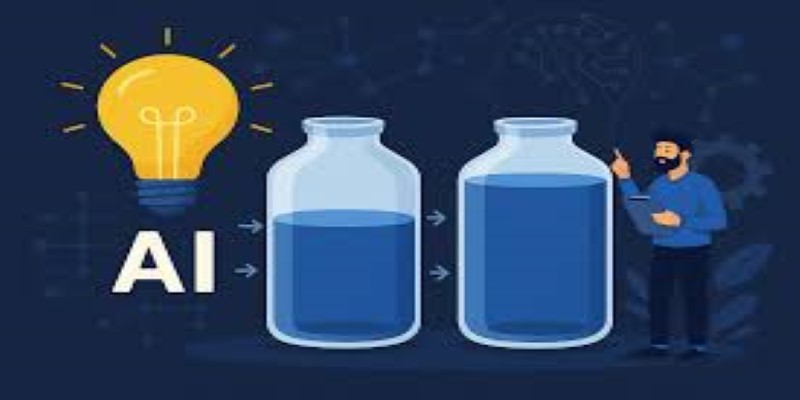
What makes the water jug scenario useful isn’t the water or the jugs. It’s how the problem is structured. Every action you take changes the situation, and the goal is to find a sequence of those actions that ends with the right outcome. This is a common thread in many areas of AI.
Machines don’t “guess.” They work through options based on rules, often using something called state-space search. That means they explore all the possible configurations of a problem and pick the one that matches the target.
Take the jug puzzle as an example. Every possible amount of water in the two jugs can be seen as a "state." Starting with (0,0), where both jugs are empty, each move—whether filling, emptying, or pouring—creates a new state. So (0,3) means the 3-liter jug is full, and the 4-liter one is empty. From there, if you pour the 3-liter into the 4-liter, you get (3,0). And so on.
An AI system might use a search algorithm to move from one state to another until it reaches the goal, like (2,0) or (0,2). Along the way, it needs to track which states it has already visited to avoid going in circles. It also needs to know when to stop—when a state matches the goal.
This kind of process is what AI uses when finding solutions in much more complicated systems. It’s about moving through options in a structured, logical way. The water jug problem is just a tidy example of how that logic works in action.
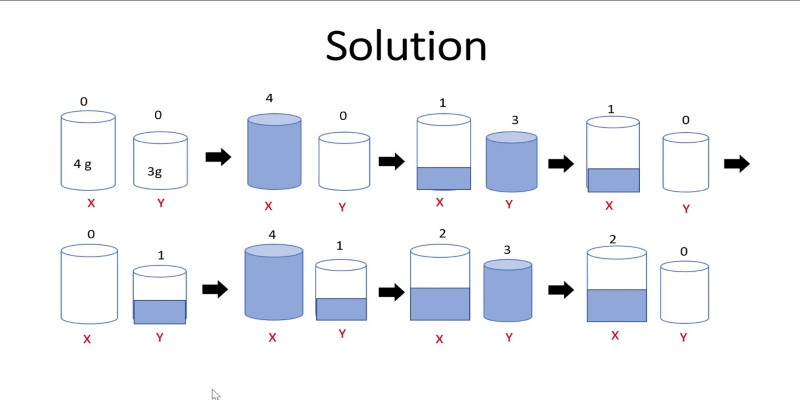
AI doesn't have intuition or hunches. It works with instructions and possibilities. So, when given a water jug problem, it relies on systematic methods to find the solution. Here's what that process looks like from a machine's point of view.
A “state” is simply a snapshot of the current situation. In this case, a state is written as a pair of numbers representing how much water is in each jug. If the 3-liter jug is full and the 4-liter jug is empty, the state is (0,3).
The AI starts at the initial state—usually (0,0)—and works through each possible action to see where it can go next.
At each step, the machine looks at which actions are allowed. These are:
These options create new states. For example, pouring from a full 3-liter into an empty 4-liter gives you (3,0) → (0,3). Each of these steps is like a move on a game board, where each position leads to another.
AI systems use algorithms to decide how to search through possible states. The two most common ones for this type of puzzle are:
Breadth-first search: This checks all possible one-step moves from the current state before moving to two-step sequences. It finds the shortest solution but uses more memory.
Depth-first search: This follows one possible path as far as it can before backing up and trying a different path. It’s more memory-efficient but may not always find the shortest route first.
Other approaches like A* and Greedy Best-First Search add cost-based decision-making, which can speed things up in larger or more complex scenarios.
Eventually, the AI hits a state where one of the jugs holds the desired amount of water—like 2 liters. When this happens, it stops and backtracks to show the series of steps that got it there.
The machine doesn’t just return the final state—it can also list every move made to reach that point. That’s one of the strengths of structured problem-solving in AI: it doesn’t just know the answer but how to explain the path that led there.
The Water Jug Problem is one of those puzzles that doesn’t look like much at first. Just a couple of containers and a number to aim for. But under that simple shell is a set of ideas that run deep in AI work: decision trees, goal states, structured moves, and efficient search.
Machines that can solve this problem aren’t learning how to pour water—they’re learning how to reason. And reasoning is at the heart of what makes AI useful. Whether it’s for logistics, recommendations, or speech recognition, the foundation is the same: define the problem clearly, explore the options, and pick the best path to the goal.
Advertisement
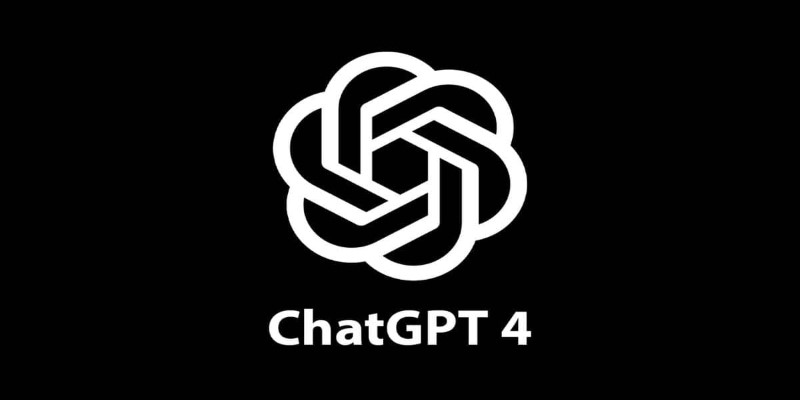
Want to use ChatGPT without a subscription? These eight easy options—like OpenAI’s free tier, Bing Chat, and Poe—let you access powerful AI tools without paying anything

Explore the top 10 LLMs built in India that are shaping the future of AI in 2025. Discover how Indian large language models are bridging the language gap with homegrown solutions
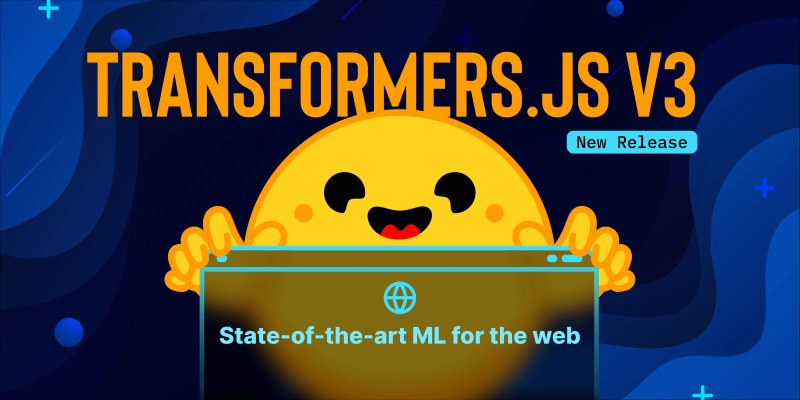
What happens when transformer models run faster right in your browser? Transformers.js v3 now supports WebGPU, vision models, and simpler APIs for real ML use

Curious about GPT-5? Here’s what to know about the expected launch date, key improvements, and what the next GPT model might bring
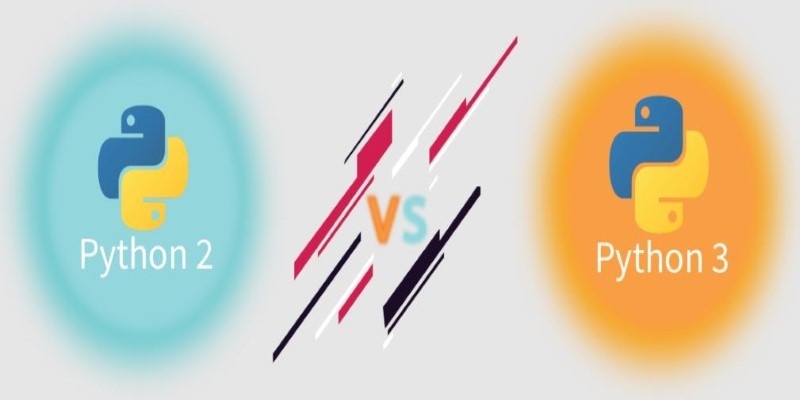
Curious about the evolution of Python? Learn what is the difference between Python 2 and Python 3, including syntax, performance, and long-term support

AI agents aren't just following commands—they're making decisions, learning from outcomes, and changing how work gets done across industries. Here's what that means for the future

How mastering SQL with CSVs can improve your data workflow. Use practical queries for cleaning, combining, and exploring CSV files through simple SQL logic

Curious about data science vs software engineer: which is a better career? Explore job roles, skills, salaries, and work culture to help choose the right path in 2025
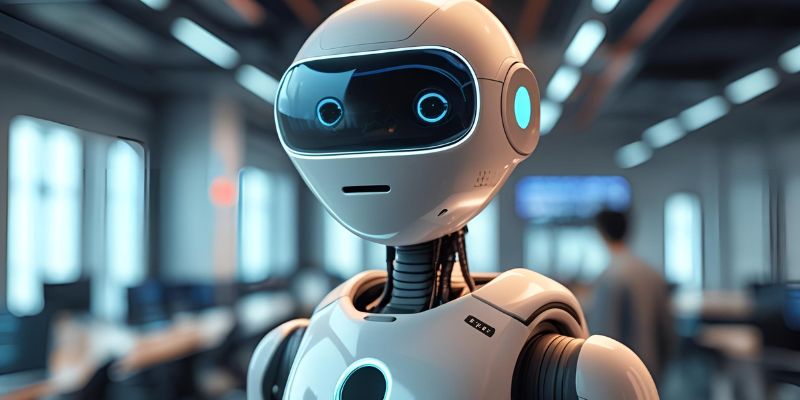
XAI’s Grok-3 AI model spotlights key issues of openness and transparency in AI, emphasizing ethical and societal impacts

How the Hugging Face embedding container simplifies text embedding tasks on Amazon SageMaker. Boost efficiency with fast, scalable, and easy-to-deploy NLP models
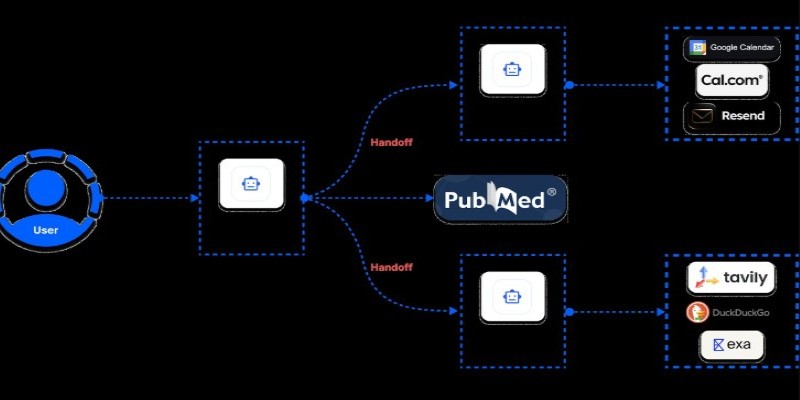
Learn how to build an MCP server using only five lines of Python code. This guide walks you through a minimal setup using Python socket programming, ideal for lightweight communication tasks
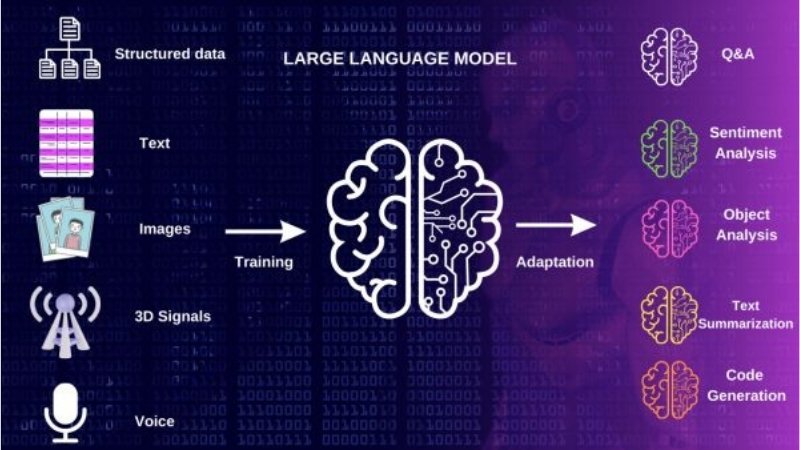
Multilingual LLM built with synthetic data to enhance AI language understanding and global communication